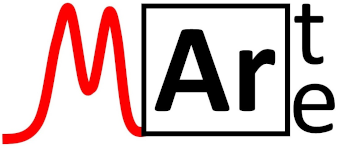
Teléfono: +34 876 553 510
Email: arua@unizar.es
Dirección: c/Pedro Cerbuna 12, Universidad de Zaragoza, Facultad de Ciencias, Departamento de Química Analítica – Zaragoza (España)
SOBRE MÍ
Ana María Rua Ibarz obtuvo su Licenciatura y Máster en Química por la Universidad de Zaragoza (Zaragoza, España). Llevó a cabo su investigación de doctorado en la Universidad de Gante (Gante, Bélgica) enfocado en el desarrollo de métodos y aplicaciones de análisis isotópico de alta precisión de Hg utilizando generación de vapor frío acoplado a espectrometría de masas-ICP multi-colector (MC-ICP-MS), y obtuvo su Título de Doctor en 2018. En mayo de 2018, tras un proceso de selección competitivo entre investigadores internacionales, Ana obtuvo una posición postdoctoral en el Instituto Flamenco de Investigación Tecnológica (VITO, Mol, Bélgica), para llevar a cabo un proyecto de investigación dedicado a explorar nuevas estrategias analíticas para la caracterización de nanoparticulas. En marzo de 2020, comenzó a trabajar como investigadora postdoctoral en la Universidad de Gante, en un proyecto en colaboración con TotalEnergies (Feluy, Bélgica). El proyecto estaba basado en el desarrollo de métodos de análisis cuantitativo tanto elemental como resuelto espacialmente de muestras relevantes en petroquímica, como catalizadores, polímeros y rocas mediante ablación laser ICP-MS. Desde noviembre de 2022, Ana esta trabajando como investigadora postdoctoral en la Universidad de Zaragoza (España) tras ser galardonada con el Programa de Becas Internacionales Marie Sklodowska-Curie (MSCA)-COFUND para la Atracción de Talento al Campus de Excelencia Internacional Campus Iberus. Su proyecto de investigación se titula “Explorando nuevas rutas para la caracterización de nanomateriales y microplásticos mediante espectroscopia de plasma”.
PUBLICACIONES
2019
Bolea-Fernandez, Eduardo; Leite, Diego; Rua-Ibarz, Ana; Liu, Tong; Woods, Glenn; Aramendia, Maite; Resano, Martín; Vanhaecke, Frank
On the effect of using collision/reaction cell (CRC) technology in single-particle ICP-mass spectrometry (SP-ICP-MS) Artículo de revista
En: Analytica Chimica Acta, vol. 1077, pp. 95-106, 2019, ISSN: 0003-2670.
@article{BOLEAFERNANDEZ201995,
title = {On the effect of using collision/reaction cell (CRC) technology in single-particle ICP-mass spectrometry (SP-ICP-MS)},
author = {Eduardo Bolea-Fernandez and Diego Leite and Ana Rua-Ibarz and Tong Liu and Glenn Woods and Maite Aramendia and Martín Resano and Frank Vanhaecke},
url = {https://www.sciencedirect.com/science/article/pii/S0003267019306920},
doi = {https://doi.org/10.1016/j.aca.2019.05.077},
issn = {0003-2670},
year = {2019},
date = {2019-01-01},
journal = {Analytica Chimica Acta},
volume = {1077},
pages = {95-106},
abstract = {In this work, the effects of using collision/reaction cell (CRC) technology in quadrupole-based ICP-MS (ICP-QMS) instrumentation operated in single-particle (SP) mode have been assessed. The influence of (i) various CRC gases, (ii) gas flow rates, (iii) nanoparticle (NP) sizes and (iv) NP types was evaluated using Ag, Au and Pt NPs with both a traditional ICP-QMS instrument and a tandem ICP-mass spectrometer. It has been shown that using CRC technology brings about a significant increase in the NP signal peak width (from 0.5 up to 6 ms). This effect is more prominent for a heavier gas (e.g., NH3) than for a lighter one (e.g., H2 or He). At a higher gas flow rate and/or for larger particle sizes >100 nm), the NP signal duration was prolonged to a larger extent. This effect of using CRC technology has been further demonstrated by characterizing custom-made 50 and 200 nm Fe3O4 NPs (originally strongly affected by the occurrence of spectral overlap) using different CRC approaches (H2 on-mass and NH3 mass-shift). The use of NH3 (monitoring of Fe as the Fe(NH3)2+ reaction product ion at m/z = 90 amu) induces a significant peak broadening compared to that observed when using H2 (6.10 ± 1.60 vs. 0.94 ± 0.49 ms). This extension of transit time can most likely be attributed to the collisions/interactions of the ion cloud generated by a single NP event with the CRC gas and it even precludes 50 nm Fe3O4 NPs to be detected when using the NH3 mass-shift approach. Based on these results, the influence of a longer peak width on the accuracy of SP-ICP-MS measurement data (NP size, particle number density and mass concentration) must be taken into account when using CRC technology as a means to overcome spectral overlap. To mitigate the potential detrimental effect of using CRC technology in the characterization of NPs via SP-ICP-MS(/MS), the use of light gases and low gas flow rates is recommended.},
keywords = {},
pubstate = {published},
tppubtype = {article}
}
2017
Bolea-Fernandez, Eduardo; Leite, Diego; Rua-Ibarz, Ana; Balcaen, Lieve; Aramendía, Maite; Resano, Martín; Vanhaecke, Frank
Characterization of SiO2 nanoparticles by single particle-inductively coupled plasma-tandem mass spectrometry (SP-ICP-MS/MS) Artículo de revista
En: J. Anal. At. Spectrom., vol. 32, iss. 11, pp. 2140-2152, 2017.
@article{C7JA00138J,
title = {Characterization of SiO2 nanoparticles by single particle-inductively coupled plasma-tandem mass spectrometry (SP-ICP-MS/MS)},
author = {Eduardo Bolea-Fernandez and Diego Leite and Ana Rua-Ibarz and Lieve Balcaen and Maite Aramendía and Martín Resano and Frank Vanhaecke},
url = {http://dx.doi.org/10.1039/C7JA00138J},
doi = {10.1039/C7JA00138J},
year = {2017},
date = {2017-01-01},
journal = {J. Anal. At. Spectrom.},
volume = {32},
issue = {11},
pages = {2140-2152},
publisher = {The Royal Society of Chemistry},
abstract = {The increase in the use of SiO2 nanoparticles (NPs) is raising concern about their environmental and health effects, thus necessitating the development of novel methods for their straightforward detection and characterization. Single particle ICP-mass spectrometry (SP-ICP-MS) is able to provide information on the size of NPs, their particle number density and mass concentration. However, the determination of Si via ICP-MS is strongly hampered by the occurrence of spectral overlap from polyatomic species (e.g., CO+ and N2+). The use of tandem ICP-MS (ICP-MS/MS) enables interference-free conditions to be obtained, even in the most demanding applications. Upon testing several gases, the use of CH3F (monitoring of SiF+, mass-shift approach) and of H2 (monitoring of Si+, on-mass approach) were demonstrated to be the most suitable to overcome the spectral interference affecting ultra-trace Si determination (LoD < 15 ng L−1). By using these approaches, SiO2 NPs (ranging between 80 and 400 nm) can be detected and characterized. For SiO2 NPs > 100 nm, it was possible to provide accurate results in a straightforward way, as the signals they give rise to are well resolved from those of the background. In the case of 80 and 100 nm NPs, the use of a simple deconvolution approach following a Gaussian model was needed to characterize SiO2 NPs apparently showing incomplete distributions as a result of the presence of the background signal. Overall, the methods developed using SP-ICP-MS/MS are sensitive and selective enough for the interference-free determination of Si at ultra-trace levels, also in the form of SiO2 NPs.},
keywords = {},
pubstate = {published},
tppubtype = {article}
}
0000
Bazo, Antonio; Bolea-Fernandez, Eduardo; Rua-Ibarz, Ana; Aramendía, Maite; Resano, Martín
En: Analytical Chemistry, vol. 0, no 0, pp. null, 0000, (PMID: 40481769).
@article{doi:10.1021/acs.analchem.5c01588,
title = {Ions with Ions, Entities with Entities: A Proof-of-Concept Study Using the SELM-1 Yeast Certified Reference Material for Intra- and Extracellular Se Quantification via Single-Cell ICP-Mass Spectrometry},
author = {Antonio Bazo and Eduardo Bolea-Fernandez and Ana Rua-Ibarz and Maite Aramendía and Martín Resano},
url = {https://doi.org/10.1021/acs.analchem.5c01588},
doi = {10.1021/acs.analchem.5c01588},
journal = {Analytical Chemistry},
volume = {0},
number = {0},
pages = {null},
note = {PMID: 40481769},
keywords = {},
pubstate = {published},
tppubtype = {article}
}
Bazo, Antonio; Bolea-Fernandez, Eduardo; Rua-Ibarz, Ana; Aramendía, Maite; Resano, Martín
En: Analytical Chemistry, vol. 0, no 0, pp. null, 0000, (PMID: 40481769).
@article{doi:10.1021/acs.analchem.5c01588b,
title = {Ions with Ions, Entities with Entities: A Proof-of-Concept Study Using the SELM-1 Yeast Certified Reference Material for Intra- and Extracellular Se Quantification via Single-Cell ICP-Mass Spectrometry},
author = {Antonio Bazo and Eduardo Bolea-Fernandez and Ana Rua-Ibarz and Maite Aramendía and Martín Resano},
url = {https://doi.org/10.1021/acs.analchem.5c01588},
doi = {10.1021/acs.analchem.5c01588},
journal = {Analytical Chemistry},
volume = {0},
number = {0},
pages = {null},
note = {PMID: 40481769},
keywords = {},
pubstate = {published},
tppubtype = {article}
}

